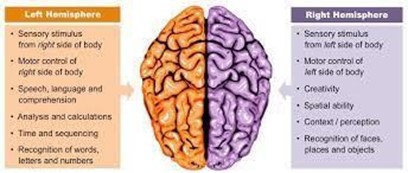A nurse is teaching the guardians of a toddler who has a cognitive delay. Which of the following instructions should the nurse include?
"Wait until your child begins school to engage them in social activities."
"Interact with your child according to their developmental age."
"Devote more of your child's time to learning than to playing."
"Teach your child several steps of a task at one time."
The Correct Answer is B
Choice A rationale:
Waiting until school age to engage in social activities is not appropriate, as social interaction is important for a toddler's development.
Choice B rationale:
Interacting with the child according to their developmental age is important for fostering appropriate growth and development.
Choice C rationale:
Devoting more time to learning than playing may not be appropriate, as play is an essential component of early childhood development.
Choice D rationale:
Teaching several steps of a task at one time may be overwhelming for a toddler with a cognitive delay. Instructions should be simple and broken down into manageable steps.
Nursing Test Bank
Naxlex Comprehensive Predictor Exams
Related Questions
Correct Answer is {"xRanges":[299.765625,329.765625],"yRanges":[366.609375,396.609375]}
Explanation
Choice A rationale: This is incorrect because at about one hour after child birth the fundus should be around the belly button (where it was at 20 weeks of gestation).
Choice B rationale: This is incorrect because at about one hour after child birth the fundus should be around the belly button (where it was at 20 weeks of gestation). It then decreases steadily at approximately 1 cm every 24 hours.
Choice C rationale: One-week post-partum, the fundal height should be about 7 cm below the umbilicus (belly button). This means that the uterus is still larger than normal, but it is contracting and healing. The fundal height may vary depending on factors such as the size and position of the baby, the amount of amniotic fluid, and the mother's body type.
Correct Answer is C
Explanation
Choice A rationale:
Aphasia, or difficulty with language, is more commonly associated with left hemispheric stroke.
Choice B rationale:
Depression can be a common psychological reaction following stroke, but it is not a specific finding associated with right hemispheric stroke.
Choice C rationale:
Right hemispheric stroke can lead to loss of depth perception and spatial awareness due to its impact on the visual-spatial processing areas of the brain.
Choice D rationale:
Slow, cautious behavior is a common finding after stroke regardless of the affected hemisphere.

Whether you are a student looking to ace your exams or a practicing nurse seeking to enhance your expertise , our nursing education contents will empower you with the confidence and competence to make a difference in the lives of patients and become a respected leader in the healthcare field.
Visit Naxlex, invest in your future and unlock endless possibilities with our unparalleled nursing education contents today
Report Wrong Answer on the Current Question
Do you disagree with the answer? If yes, what is your expected answer? Explain.
Kindly be descriptive with the issue you are facing.
